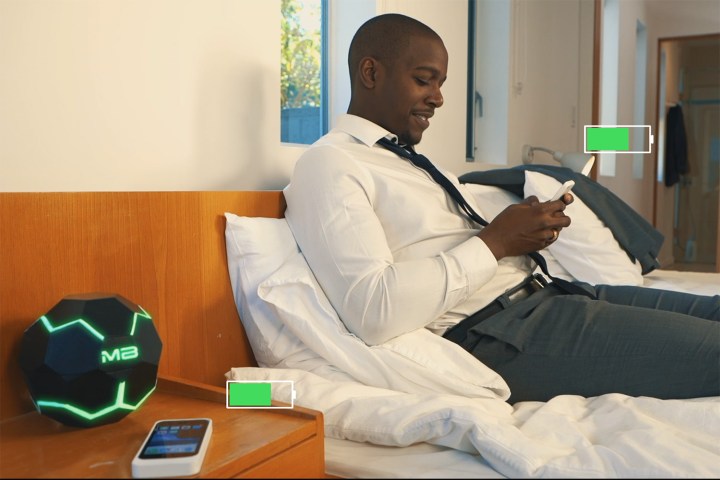
Wireless electricity of the sort envisioned by Nikola Tesla seems to be the charging ideal which the world is striving toward. Who wouldn’t, after all, love to be able to plop down their smartphone without having to plug it into a wall socket, set it on a charging pad, or dig for the appropriate cable? Given the acute lack of such chargers on the market, you would be forgiven for dismissing true wireless charging as a pipe dream. But thanks to bright minds at Columbia University, the dream is closer to reality than you think.
Yank Technologies, a startup headquartered in Columbia University’s startup lab, developed a router-like wireless charger, the MotherBox, capable of delivering power at a distance to multiple devices simultaneously. It works without wires, a charging pad, or a dock, and doesn’t require a physical connection between the charger and smartphone. Charging takes place entirely over the air.
The MotherBox is simple to use. Once a receiver is attached to an Android device, iPhone, or another compatible smartphone, charging begins. The closer the devices are to the charging pad, the faster they charge. And from there, users can move around the MotherBox at will — the transmitter automatically compensates for obstructions. A companion
The MotherBox and smaller MotherBox, the MotherBox mini, have ranges of up to 20 inches and 10 inches. The MotherBox must be connected to an outlet, while the MotherBox Mini packs a rechargeable battery that can be used on the go. Both ship with a USB cable and receiver.
The MotherBox team, helmed by Yank and chief engineer Jin Li, has successfully completed a MotherBox hardware prototype with proprietary software, firmware, and algorithms. They are launching on Indiegogo with a $25,000 funding goal and offering early backers a discounted purchase price of $79.
Yank Technologies is not the only wireless startup attempting to make a splash. Energous’ WattUp technology enables wireless charging in various forms, including small, short-throw charging dock, a medium-distance desktop option and a long-throw base station that can beam energy from up to 15 feet in any direction. Ossia’s Cota technology can transmit power to dozens of devices simultaneously. And TechNovator’s XE base station can power a smartphone as far as 17 feet away.
But despite the competition, the MotherBox team is forging bravely ahead. “Technology today is like a sexy Ferrari that’s really low on gas. It’s beautiful and amazing, but limited in reaching its true potential. It doesn’t have to be this way,” Josh Yank, CEO of Yank Technologies, said in a press release. “We’re excited to finally showcase The MotherBox and help build the foundation for wire-free charging solutions in the years to come.”
Editors' Recommendations
- The iPhone 15 may finally get reverse wireless charging — but I don’t want it
- Oppo’s Flash Initiative will put phone fast charging in your next car
- The svelte Mu Two international travel charger can power your laptop and phone


